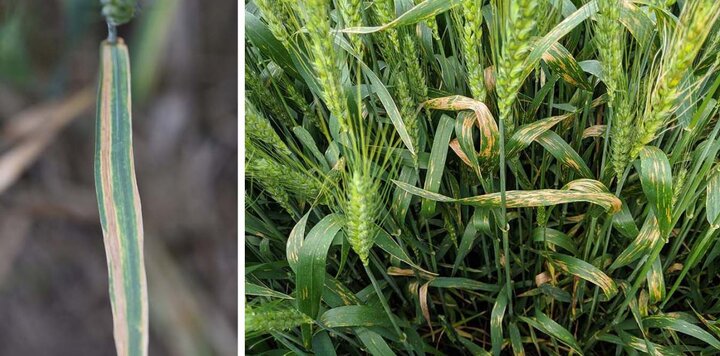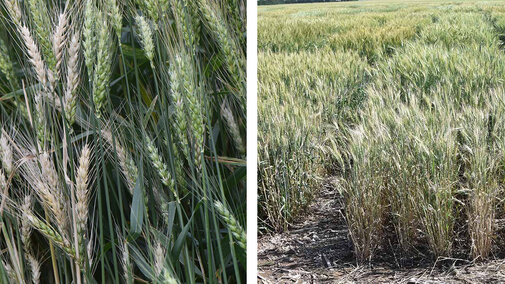
The latest field surveys in southeast, south central, and southwest Nebraska showed varying levels of wheat diseases that are favored by excessive moisture. Fusarium head blight (Figure 1) was the most noticeable disease and was present at moderate to severe levels in some fields but only at trace levels in others. Very severe levels were present in research plots at the Havelock Research Farm near Lincoln (Lancaster County) on June 24 and in a state variety trial at the South Central Agricultural Lab near Clay Center (Clay County) on June 27. Moderate to severe levels were found in some growers’ fields in Red Willow, Furnas, Harlan, Webster, and Nuckolls counties on June 22 and in a grower’s field in Furnas County on June 27.
Other diseases found at moderate to severe levels were take-all (Figure 2) in a state variety trial and a grower’s field in Hitchcock County on June 21 and Cephalosporium stripe (Figure 3) in a grower’s field in Red Willow County on June 22. Bacterial streak (Figure 4) was present at severe levels in a state variety trial in Harlan County on June 22 and at moderate levels in hot spots in a grower’s field in Perkins County on June 27. Some fields that were not sprayed with a fungicide had moderate to severe levels of stripe rust (Figure 5), leaf rust (Figure 6), or both (Figure 7).



Management
It is too late this growing season to apply a fungicide to suppress Fusarium head blight or control foliar fungal diseases. Take-all, Cephalosporium stripe, and bacterial streak cannot be controlled once they occur. For the next wheat crop, choose varieties with resistance or tolerance to specific diseases and avoid planting wheat following corn, wheat, sorghum, or other cereal crops.

